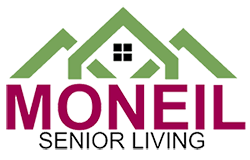
17 Nov Assisted Living Investment Financial Analysis Guide

When analyzing assisted living investments, focus on key financial metrics like adjusted EBITDA, which provides accurate insights into facility performance beyond basic earnings. Consider EBITDA multiples, typically between 6.5x and 9.9x, to evaluate profitability against asset valuation. Revenue streams, primarily from resident fees and care services, and Medicare and Medicaid reimbursements, are pivotal, with occupancy rates heavily influencing revenue. Property evaluation should include age, condition, safety compliance, and location. Cap rates, averaging 7.7%, affect long-term returns. By examining these elements along with competition and payer mix, you can form robust investment strategies and enhance your understanding.
Key Takeaways
- Evaluate adjusted EBITDA to accurately measure facility performance and profitability.
- Analyze revenue streams, including resident fees and reimbursements, for financial stability insights.
- Use EBITDA multiples and cap rates to assess investment potential and long-term returns.
- Inspect property conditions, safety compliance, and amenities for investment evaluation.
- Consider occupancy rates and local market demand for sustainable financial health.
Understanding Financial Metrics
When evaluating assisted living investments, understanding financial metrics is vital for making informed decisions. You need to assess these metrics closely to gauge the potential and viability of your investment. Key among these are EBITDA multiples and revenue multiples, which play a central role in valuation. For assisted living facilities, EBITDA multiples typically range from 6.5x to 9.9x, reflecting variations in financial performance. These figures provide a snapshot of how well a facility might generate earnings relative to its valuation. Additionally, it’s important to note that economic trends such as low unemployment rates and interest rate reductions can influence these financial metrics and impact investment strategies.
In addition, revenue multiples range from 2.2x to 4.2x, offering a different perspective by focusing on revenue generation. It’s important to evaluate adjusted EBITDA, which helps measure facility performance under normal operating conditions. This metric adjusts for anomalies that might skew a facility’s financial picture, ensuring a more accurate financial analysis.
Cap rates, averaging around 7.7%, are another essential component, impacting long-term return evaluations. They assist in understanding the relationship between the facility’s income and its valuation. By analyzing these financial metrics, you can better assess the potential returns and risks associated with your assisted living investment, leading to more strategic decision-making.
Analyzing Revenue Streams
To effectively analyze revenue streams in assisted living investments, you must focus on the primary sources of income: resident fees for services like accommodation, meals, and care. These resident fees form the backbone of revenue analysis in Assisted Living facilities. It’s important to take into account additional revenue from specialized care services, such as memory care or therapy, which can greatly boost income. Conducting a comparative evaluation of these revenue streams can help you evaluate their effectiveness against industry standards. Medicare and Medicaid reimbursements also play a role in revenue, particularly for facilities that qualify based on services provided and eligibility criteria. Analyzing these reimbursements helps in understanding their contribution to overall financial performance. Occupancy rates are critical metrics in this analysis. High occupancy rates often indicate robust financial health, as they directly impact revenue generation. You should track average monthly fees and ancillary service income, such as transportation or recreational activities, to gain a comprehensive view of the facility’s revenue streams.
Understanding these components is essential for evaluating financial performance and projecting future growth. A detailed revenue analysis allows you to identify trends, optimize pricing strategies, and enhance service offerings, ensuring sustainable growth in the competitive Assisted Living market.
Evaluating Property Quality
Evaluating the quality of a property in assisted living investments requires a thorough assessment of various essential factors. Start by examining the building’s age and condition. Newer properties may offer modern amenities that appeal to residential seniors, while older buildings might necessitate renovations. Compliance with safety standards is pivotal, ensuring the assisted living facility can provide quality care without compromising residents’ safety. Additionally, consider the potential for innovative financing solutions that can aid in acquiring or upgrading these properties. Inspect the facility’s amenities and common areas. These spaces should be clean and well-maintained, reflecting the operational efficiency of senior care. A detailed inspection reveals potential structural issues or costly repairs, impacting property values and financial health.
Consider the facility’s location within the local market. Proximity to healthcare facilities, public transportation, and community resources can significantly impact investment opportunities. A strategically positioned property is more likely to attract residents, enhancing its long-term viability.
Review the history of maintenance and renovations. This will indicate the commitment to maintaining high-quality care standards over time. A well-maintained property supports a stable financial health, suggesting a sound investment. By thoroughly evaluating these aspects, you can make informed decisions in the competitive assisted living sector.
Assessing Market Health
A strong analysis of market health in the assisted living sector requires a focus on key indicators like occupancy rates, revenue streams, and competition levels. Understanding these elements helps you evaluate the assisted living market’s potential. High occupancy rates often indicate robust market demand trends, driven by aging demographics and longer life expectancies in the senior housing market. Analyzing revenue streams provides insight into the financial stability of facilities and identifies areas for growth or concern.
Assessing competition levels involves examining both local and regional markets to determine market saturation and opportunities for new facilities. This financial analysis should also consider the regulatory environment impact, as compliance costs can greatly affect operational budgets. Keep an eye on changes in regulations that could modify compliance requirements and increase costs.
Utilizing financial metrics such as EBITDA multiples gives you a clearer picture of investment potential and industry performance. These metrics can help you compare facilities and assess their profitability relative to peers. Conducting a thorough market analysis not only highlights opportunities and risks but also aids in understanding competitive dynamics. This all-encompassing approach ensures you’re making well-informed decisions in the assisted living investment landscape.
Financial Performance Indicators
Understanding financial performance indicators is necessary for making informed investment decisions in the assisted living sector. When evaluating assisted living investments, you’ll want to focus on key indicators like EBITDA multiples and revenue multiples for accurate valuation assessment. For Q1 2024, EBITDA multiples for these facilities range from 6.5x to 9.9x, while revenue multiples span 2.2x to 4.2x across different revenue brackets. These metrics help determine the potential profitability and value of an investment.
Cap rates, averaging 7.7%, provide a snapshot of the sector’s return on investment and associated risk profile. A higher cap rate generally indicates higher risk, but it may also signify higher potential returns. Pay close attention to adjusted EBITDA, which accounts for non-recurring items, offering a clearer picture of ongoing operational performance.
Occupancy rates are another vital factor; higher rates typically suggest better financial health. Meanwhile, payer diversity can mitigate risk by reducing dependency on a single revenue source. By analyzing these financial performance indicators, you can conduct a thorough valuation assessment and make more strategic investment choices in the assisted living industry. Understanding these elements will significantly improve your decision-making process.
Long-term Return Strategies
When considering long-term return strategies in assisted living investments, it’s vital to focus on factors like property quality, occupancy rates, and payer diversity. These elements are key in shaping your investment’s financial health and sustainability. High property quality attracts residents, ensuring stable occupancy rates. A diverse payer mix further enhances financial stability, reducing reliance on a single income source.
Adjusted EBITDA is a pivotal metric for evaluating facility performance. It reflects earnings before interest, taxes, depreciation, and amortization, adjusted for irregular items, providing a clearer picture of long-term investment viability. Monitoring adjusted EBITDA helps you evaluate how well a facility performs under normal conditions, guiding strategic decisions.
Cap rates, averaging 7.7% for assisted living and 7.8% for memory care, are essential in evaluating potential returns. These rates help determine asset value and future profitability. Balancing EBITDA multiples with property quality and occupancy rates is vital. This balance maximizes long-term returns by aligning profitability with asset valuation.
Valuation factors like real estate quality and payer mix have a significant impact on investment success. By carefully analyzing these factors, you can develop robust long-term return strategies, ensuring your assisted living investment thrives in a competitive market.
Frequently Asked Questions
What Are the Common Risks Associated With Investing in Assisted Living Facilities?
When investing in assisted living facilities, you should consider several risks. Market fluctuations and economic downturns can impact profitability. High staff turnover and rising healthcare costs affect operational stability. Reputation management is essential, as poor resident satisfaction can damage your facility’s image. Legal challenges and insurance liabilities pose financial threats. Maintenance expenses and competition analysis require ongoing attention to maintain competitiveness and compliance. Understanding these risks helps you make informed investment decisions.
How Do Demographic Trends Influence Assisted Living Investment Opportunities?
Have you considered how demographic trends shape assisted living investments? Population growth and an aging population increase healthcare demand, influencing property values and competition analysis. Rising income levels and urbanization impact consumer preferences, shifting demand toward urban areas. Meanwhile, the labor market and social trends dictate staffing needs. Understanding these factors helps you navigate investment opportunities strategically, ensuring you align with market shifts and capitalize on emerging trends effectively.
What Are the Typical Financing Options Available for Assisted Living Investments?
When you’re exploring financing options for assisted living investments, consider equity financing and debt financing. You can attract private investors or secure real estate loans. Bridge financing offers temporary solutions, while government grants provide additional funds. Crowdfunding options can engage a broader audience. Joint ventures allow sharing of risks and rewards. Mezzanine financing combines debt and equity features. SBA loans cater to small businesses, providing essential support for your investment goals.
How Does Regulatory Compliance Affect Assisted Living Investment Decisions?
Navigating regulatory compliance in assisted living investments is like walking a tightrope, balancing legal implications and financial impact. You must consider market trends and operational challenges while meeting compliance requirements. Regulatory changes can significantly affect risk assessment, demanding adaptive investment strategies. Quality standards and cost analysis are crucial, as non-compliance can lead to penalties. Understanding these elements helps you make informed decisions, ensuring your investment remains viable and aligned with industry expectations.
What Role Does Technology Play in the Future of Assisted Living Investments?
You need to regard technology integration as an essential part of future assisted living investments. Remote monitoring and telemedicine services enhance care delivery, while data analytics optimize operations. Smart home devices and IoT solutions improve safety and efficiency. Virtual reality and robotics assistance enrich resident experiences, and artificial intelligence streamlines decision-making. Wearable tech monitors health metrics continuously, making investments more appealing by promising better outcomes and increased operational efficiency.
Conclusion
You’ve navigated the maze of assisted living investment with precision. By mastering financial metrics and dissecting revenue streams, you’ve revealed the secrets to success. Evaluating property quality and gauging market health have armed you with unparalleled insights. Your understanding of financial performance indicators now rivals that of seasoned analysts. Embrace long-term return strategies, and you’ll not just thrive but redefine the industry standard. Your investment journey is destined for legendary success, transforming challenges into golden opportunities.

Sorry, the comment form is closed at this time.